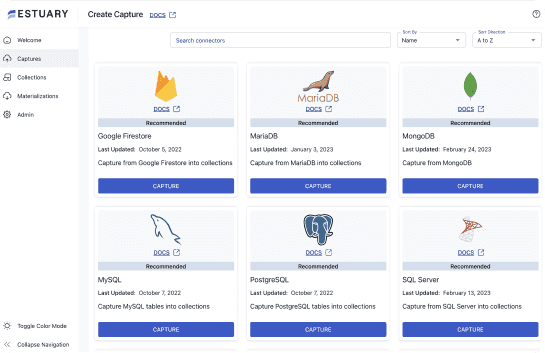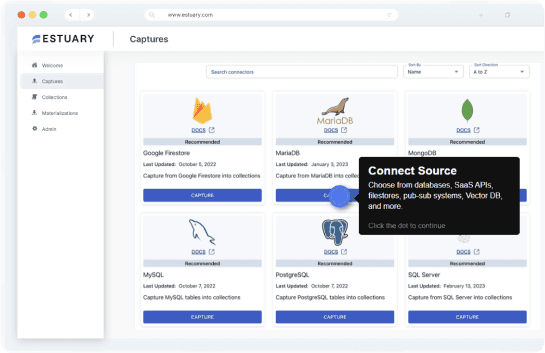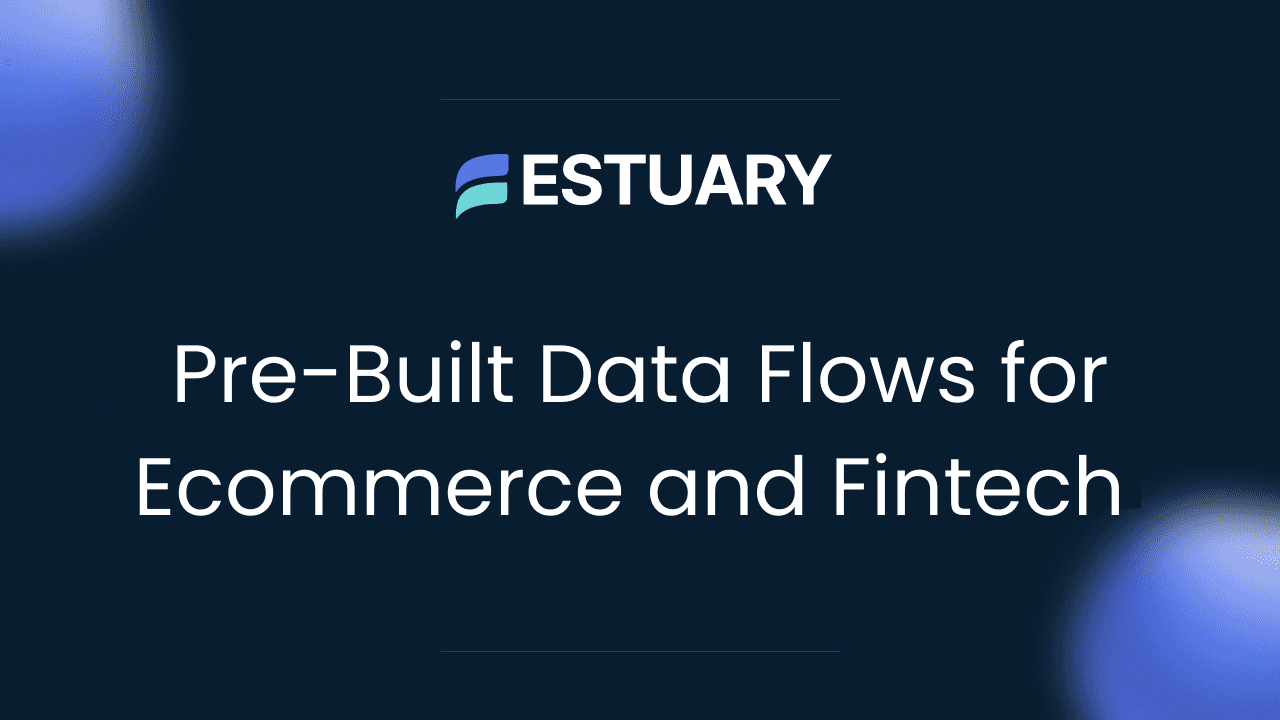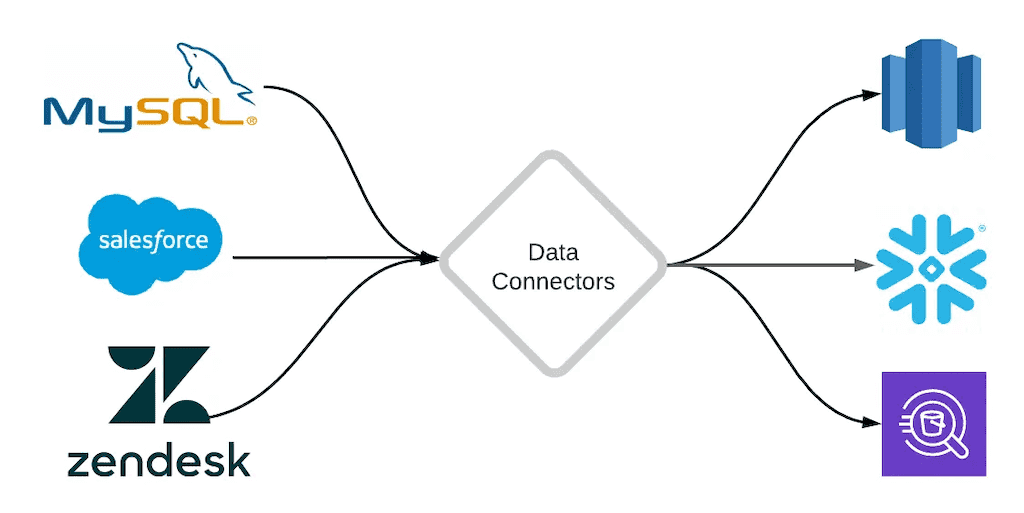
Ecommerce and fintech companies run on data. Whether it’s tracking payments, reconciling transactions, or analyzing customer behavior across multiple channels, these industries need data pipelines that are fast, reliable, and secure. But building those pipelines from scratch can be costly and time-consuming. That’s where pre-built data flows come in.
Pre-built data flows are ready-made integrations that connect common sources like Shopify, Stripe, PayPal, or Klaviyo to destinations such as Snowflake, BigQuery, or Databricks. Instead of writing custom ETL code or maintaining fragile scripts, teams can use these out-of-the-box connectors to move data quickly and accurately. The result: faster time-to-insight, lower engineering overhead, and improved compliance.
This is especially critical in ecommerce and fintech:
- In ecommerce, real-time data enables personalized recommendations, inventory management, and marketing attribution.
- In fintech, milliseconds matter for fraud detection, payment reconciliation, and regulatory reporting.
The challenge? Not all platforms offer the same depth of pre-built connectors or support for real-time streaming. Many vendors focus on batch jobs, which means data arrives hours late — too slow for scenarios like payment fraud monitoring or dynamic pricing.
In this blog, we’ll explore the top platforms offering pre-built solutions for e-commerce and fintech data flows in 2025. We’ll cover what pre-built data flows actually mean, compare leading platforms, and highlight why real-time streaming connectors are becoming the new standard.
What Are Pre-Built Data Flows?
At the simplest level, a pre-built data flow is a ready-to-use integration that connects a data source to a destination without requiring custom engineering. Instead of writing scripts or building pipelines in-house, teams can select a connector that’s already designed to capture, transform, and deliver the data where it needs to go.
For example, an ecommerce team might use a pre-built Shopify to BigQuery connector to send order data directly into their analytics warehouse. A fintech company might rely on a Stripe to Snowflake connector to stream transactions into a fraud detection system. These flows handle the heavy lifting: authentication, schema management, incremental updates, and error handling.
Key Characteristics of Pre-Built Data Flows
- Plug-and-play setup – No need to write SQL scripts or custom code.
- Schema-aware – Data is validated and structured automatically, reducing errors.
- Change capture support – For databases, flows often include CDC (Change Data Capture) to keep destinations continuously updated.
- Scalability – Designed to handle large volumes of transactions, especially critical in ecommerce promotions or fintech surges.
Why They Matter for Ecommerce & Fintech
- Ecommerce: Without pre-built connectors, syncing customer events across Shopify, Klaviyo, and Meta Ads can take weeks of engineering. Pre-built flows reduce that to minutes.
- Fintech: Payments, subscriptions, and accounting data must be synchronized with downstream systems like Snowflake or Databricks. Pre-built flows make this integration repeatable, secure, and compliant.
In short, pre-built data flows act as the backbone of modern ETL/ELT platforms. They allow teams to move from data engineering bottlenecks to data-driven decision-making faster, a critical advantage in industries where timing and accuracy define competitiveness.
In practice, most platforms, including Estuary Flow, deliver pre-built data flows through pre-built connectors. Connectors are the building blocks that know how to extract data from a source (like Shopify or Stripe) and deliver it to a destination (like BigQuery or Snowflake). By pairing a source connector with a destination connector, users can instantly create an end-to-end data flow. This distinction matters technically, but for most teams the benefit is the same: faster setup, less maintenance, and reliable pipelines out of the box.
Want to see how pre-built connectors work in practice? Watch Estuary Interactive Demo and explore real-time pipelines in minutes.
Ecommerce Data Flows
Ecommerce platforms generate more customer and transaction data than almost any other industry. Every order, product view, abandoned cart, and ad click creates signals that can be used to drive smarter decisions. The challenge is getting all of that information into the right systems quickly, reliably, and in a usable format.
Ecommerce Data Challenges
- Fragmented sources: Data is spread across storefronts like Shopify or WooCommerce, marketing automation tools like Klaviyo, and ad platforms such as Google Ads, Meta Ads, TikTok, and Amazon Ads.
- Cross-channel reporting: Marketing teams want a single source of truth for performance across campaigns, but raw data is siloed by vendor.
- Inventory and personalization: Modern ecommerce requires near real-time updates to optimize stock levels, personalize customer experiences, and adjust pricing dynamically.
Why Pre-Built Data Flows Matter
Pre-built data flows simplify ecommerce integration by providing ready-made pipelines from these sources into destinations like Snowflake, BigQuery, Databricks, or PostgreSQL. Instead of spending weeks building and maintaining custom scripts, teams can:
- Automate ingestion of orders, customers, and campaign data.
- Ensure consistency with schema-aware connectors that validate and structure data.
- Accelerate analytics by feeding downstream dashboards, machine learning models, and personalization engines.
Real-Time Advantage in Ecommerce
While daily or hourly batch updates can work for reporting, real-time data flows unlock far more value:
- Personalized recommendations triggered by the customer’s most recent actions.
- Live campaign optimization where ad budgets shift instantly based on performance.
- Dynamic inventory tracking to prevent overselling or stockouts.
In short, pre-built ecommerce data flows give retailers the ability to respond in real time to customer behavior, optimize operations, and deliver seamless shopping experiences.
Fintech Data Flows
Financial services and fintech companies depend on accurate, timely data more than almost any other industry. Every transaction, subscription payment, or account update needs to be captured and reconciled quickly to ensure trust, compliance, and customer satisfaction.
Fintech Data Challenges
- Payments and transactions: Platforms like Stripe, PayPal, Braintree, and Chargebee generate millions of events that must be reconciled with downstream systems.
- Accounting and reporting: Tools such as Netsuite or Sage Intacct are critical for revenue recognition, audits, and compliance. Integrating them manually is error-prone.
- Fraud detection: Detecting suspicious activity requires analyzing transaction data as it happens, not hours later.
- Regulatory compliance: Fintech companies operate under strict rules (PCI, SOX, GDPR). Data pipelines must ensure integrity, traceability, and auditability.
Why Pre-Built Data Flows Matter
Pre-built connectors remove the burden of manually coding integrations between payment systems, databases, and warehouses. With out-of-the-box pipelines, fintech teams can:
- Streamline payment processing by syncing Stripe or PayPal events directly into warehouses like Snowflake or BigQuery.
- Automate reconciliation between transaction platforms and accounting systems such as Netsuite or Sage Intacct.
- Enable compliance-ready reporting without manual data entry or fragile ETL scripts.
Real-Time Advantage in Fintech
Batch processing is often too slow for financial use cases. Real-time data flows allow fintech organizations to:
- Identify fraud instantly, blocking suspicious transactions before they escalate.
- Maintain accurate balances and reconcile payments in near real-time.
- Feed machine learning models for credit scoring or risk analysis with live data.
In fintech, where milliseconds can mean millions of dollars, pre-built real-time data flows aren’t just convenient — they’re essential.
Fintech teams are already using Estuary to power fraud detection and compliance reporting. See real examples in our Customer Success Stories.
Batch vs Real-Time: Why It Matters for Ecommerce and Fintech
Not all data flows are created equal. Traditional ETL tools rely on batch processing, which moves data in scheduled intervals — often every 15 minutes, every hour, or once per day. While this approach works for historical reporting, it falls short in industries where timing is everything.
Batch Processing
- How it works: Data is extracted and loaded in chunks, usually at set intervals.
- Strengths: Reliable for periodic reports, trending analysis, and historical dashboards.
- Limitations: Data is always stale by design. In ecommerce, that can mean missing live campaign signals. In fintech, it can mean failing to flag fraudulent activity fast enough.
Real-Time Streaming
- How it works: Data flows continuously from sources like Shopify, Stripe, or PostgreSQL into warehouses, databases, or real-time analytics engines.
- Strengths: Enables instant insights, operational decision-making, and live personalization.
- Limitations: Requires more advanced infrastructure than batch, which is why many legacy ETL vendors don’t support it natively.
Why It Matters in Ecommerce
- Personalization: Recommend products based on the customer’s latest click — not yesterday’s data.
- Dynamic campaigns: Reallocate ad spend instantly to the highest-performing channels.
- Inventory tracking: Prevent overselling by updating stock levels in real time.
Why It Matters in Fintech
- Fraud detection: Spot and block suspicious transactions the second they occur.
- Payment reconciliation: Keep balances accurate across multiple systems without waiting for end-of-day jobs.
- Compliance: Maintain up-to-date, auditable records to satisfy regulators.
In both ecommerce and fintech, real-time data isn’t just a “nice-to-have.” It’s a competitive edge. Companies that rely solely on batch pipelines risk delayed decisions, missed opportunities, and higher operational costs.
Estuary Flow: A Unified Platform for Ecommerce and Fintech
After exploring the challenges of ecommerce and fintech data flows, it’s clear that most businesses need more than just isolated connectors. They need a unified platform that can handle databases, SaaS apps, ecommerce tools, and fintech systems — all in one place. That’s where Estuary Flow stands out.
A Unified Connector Ecosystem
Estuary Flow provides 200+ pre-built connectors that cover the full spectrum of modern data systems:
- Ecommerce sources: Shopify, WooCommerce, Klaviyo, Recharge, Google Ads, Meta Ads, TikTok Marketing, Amazon Ads.
- Fintech sources: Stripe, PayPal, Braintree, Chargebee, Netsuite, Sage Intacct.
- Databases & warehouses: PostgreSQL, MySQL, MongoDB, Snowflake, BigQuery, Databricks, Redshift, Apache Iceberg.
Unlike point solutions that focus only on SaaS or only on databases, Estuary unifies them into a single platform.
Real-Time + Batch, in One Platform
Most ETL vendors force teams to choose between batch updates or separate streaming infrastructure. Estuary Flow supports both:
- Batch ingestion for historical backfills or scheduled loads.
- Real-time CDC and event streams for instant updates.
- Schema enforcement and evolution built-in, ensuring data quality as sources change.
This flexibility means ecommerce and fintech teams can start with batch reporting but scale into true real-time analytics without adopting another tool.
Built for Business-Critical Use Cases
Estuary Flow isn’t just about moving data; it’s about enabling use cases that directly impact revenue and compliance:
- Ecommerce: Shopify to BigQuery pipelines for real-time sales dashboards, Klaviyo to Snowflake for attribution, Recharge to Databricks for subscription churn analysis.
- Fintech: Stripe to Snowflake pipelines for fraud detection, PayPal to BigQuery for real-time reconciliation, Netsuite to Databricks for automated compliance reporting.
Why Estuary Flow is Different
- Unified platform: Connect SaaS, databases, warehouses, and event streams in one place.
- True real-time: Built-in streaming ensures data arrives in seconds, not hours.
- Scalable and reliable: Fault-tolerant architecture designed for enterprise-grade volumes.
- Transparent pricing: Volume-based, not MAR-based, avoiding hidden costs common with legacy ETL tools.
By combining pre-built connectors, streaming-first architecture, and unified pipeline management, Estuary Flow gives ecommerce and fintech companies the agility to act on data instantly.
Ready to simplify your data flows? Request a Demo or Contact Us to see Estuary Flow in action.
Conclusion
Ecommerce and fintech companies face the same challenge: their data is spread across dozens of systems, but insights are only valuable if they arrive on time. Pre-built data flows provide the fastest way to connect these sources with the destinations where analysis and decision-making happen.
Batch ETL tools were once enough, but today’s competitive landscape demands real-time streaming. Customers expect personalized experiences in the moment. Regulators expect accurate, auditable financial records without delay. Businesses that can’t act on their data instantly risk losing both revenue and trust.
That’s why platforms like Estuary Flow are redefining what data integration looks like. By unifying 200+ pre-built connectors, real-time CDC, and streaming-first architecture, Flow enables ecommerce and fintech teams to move data anywhere it needs to go — securely, reliably, and in seconds.
If you’re ready to simplify your pipelines and unlock real-time insights, explore how Estuary Flow can power your ecommerce or fintech data strategy.
👉 Try Estuary Flow for Free and see how quickly you can build your first pipeline.
Key Takeaways
- Pre-built data flows eliminate the need for custom ETL coding, letting ecommerce and fintech teams connect tools like Shopify, Stripe, PayPal, and Klaviyo to warehouses and analytics platforms in minutes.
- Ecommerce companies use them to unify multi-channel marketing data, optimize inventory, and deliver personalized experiences.
- Fintech companies rely on them for fraud detection, real-time reconciliation, and compliance-ready reporting.
- Batch pipelines are fine for historical reporting, but real-time data flows are essential for personalization, fraud prevention, and operational efficiency.
- Estuary Flow is the only unified platform that combines 200+ pre-built connectors, batch + real-time ingestion, and schema enforcement to power business-critical data pipelines across both ecommerce and fintech.

About the author
Team Estuary is a group of engineers, product experts, and data strategists building the future of real-time and batch data integration. We write to share technical insights, industry trends, and practical guides.
















